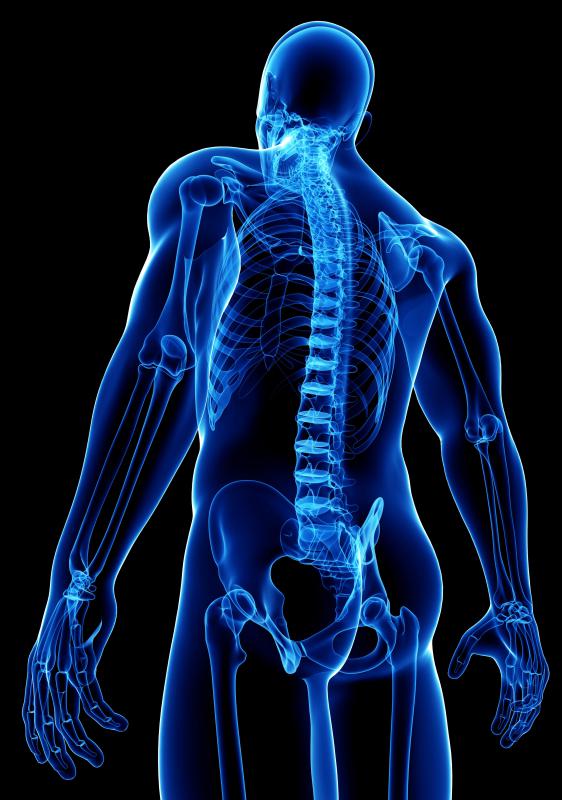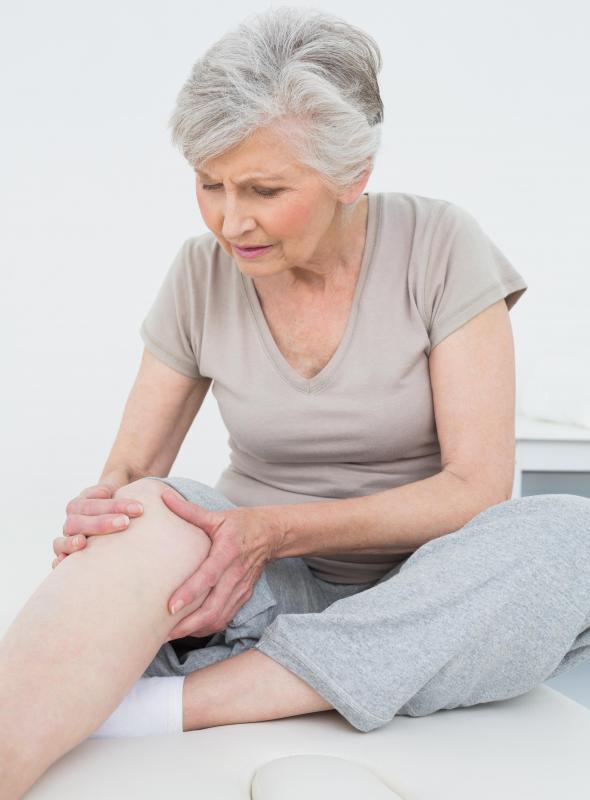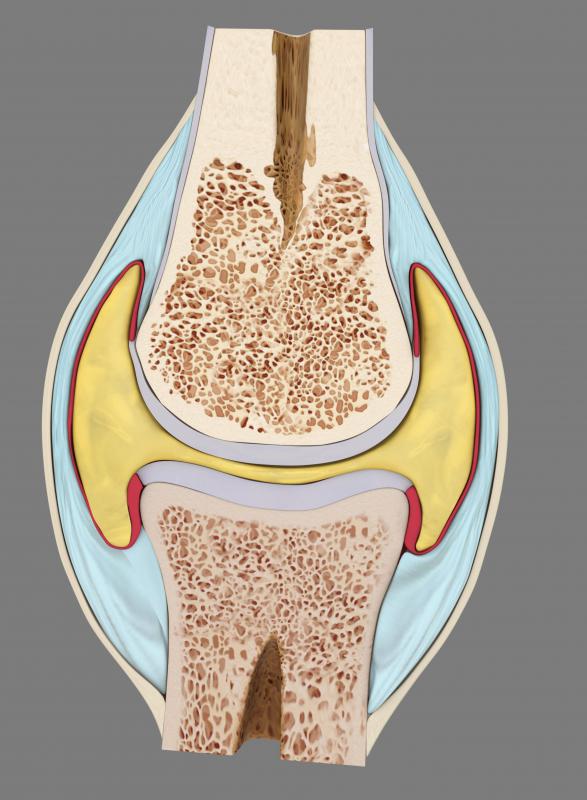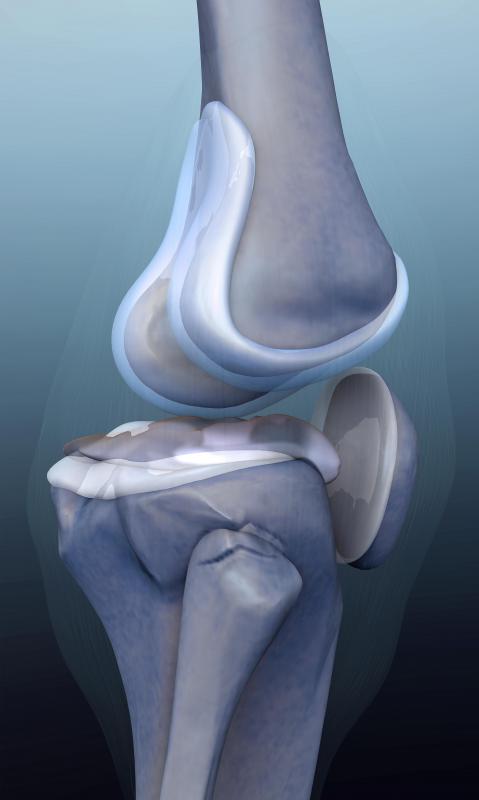At TheHealthBoard, we're committed to delivering accurate, trustworthy information. Our expert-authored content is rigorously fact-checked and sourced from credible authorities. Discover how we uphold the highest standards in providing you with reliable knowledge.
What Is a Cartilaginous Joint?
A cartilaginous joint is an anatomical structure within the body where two bones connect, and which is made of cartilage. This type of joint allows for limited movement. The structure and mobility of these mechanisms make them distinct from the two other types of joints: fibrous and synovial. Two types of cartilaginous joints include primary and secondary.
In the body, different types of joints are necessary depending on how much mobility a bone requires. In areas such as the skull, bones are connected with fibrous joints, which are made largely from the same types of fibers found in other connective tissues and which provide extremely limited or no mobility. Synovial joints, such as those found in the knee, are the most flexible and are characterized by capsules surrounding the joint and the presence of synovial fluid. A cartilaginous joint is the middle ground between these two extremes, allowing some bending or twisting with minimal sacrifice of strength.

When examining the skeleton, a person may find a cartilaginous joint where long bones are still growing. They occur in many different areas of the body, however. The best example of this type of joint is the spine — these joints are present between each vertebra.
Scientists distinguish between two major types of cartilaginous joint: primary and secondary. Primary cartilaginous joints also are called synchondroses, while secondary ones are called symphyses. Synchondroses are made from hyaline cartilage and have the potential to ossify or harden over time if conditions are right. Symphyses are a combination of fibrocartilage and hyaline cartilage and typically do not ossify.

Looking more specifically at synchondroses, although not all of these joints ossify, many do. During this process, two or more bones may fuse to become one structure. The number of entire bones thus varies with age. This is why a newborn human baby has approximately 300 bones, while an adult has only 206.
The ossification process also can create problems if it happens too quickly or in an area where ossification is not desirable. For instance, normally, as a baby grows, the growing brain puts pressure on the bones of the skull, causing the bones to expand slightly and get bigger. If most or all of the bones fuse early, the brain cannot develop properly and intellect may be impaired, while deformities may happen if fusion in only some area redirects growth to unfused areas. Ossification of cartilage in an adult may limit mobility, which is a common issue for elderly individuals.

Arthritis is a medical condition that impacts both non-ossified synchondroses and symphyses. This condition occurs when the cartilage in a joint breaks and wears down, causing inflammation and pain. The breakdown of the cartilage in joints usually happens over time, which is why most arthritis sufferers are more advanced in age. Doctors can treat this problem with techniques such as steroid injections, bracing and surgery. To avoid these treatments and keep joints healthy, physicians recommend that people engage in low-impact activities that strengthen surrounding muscles and which stretch and move the joints to maintain flexibility, wear protective gear, lose excess weight, and increase omega fatty acid and calcium intake.
AS FEATURED ON:
AS FEATURED ON:
















Discuss this Article
Post your comments